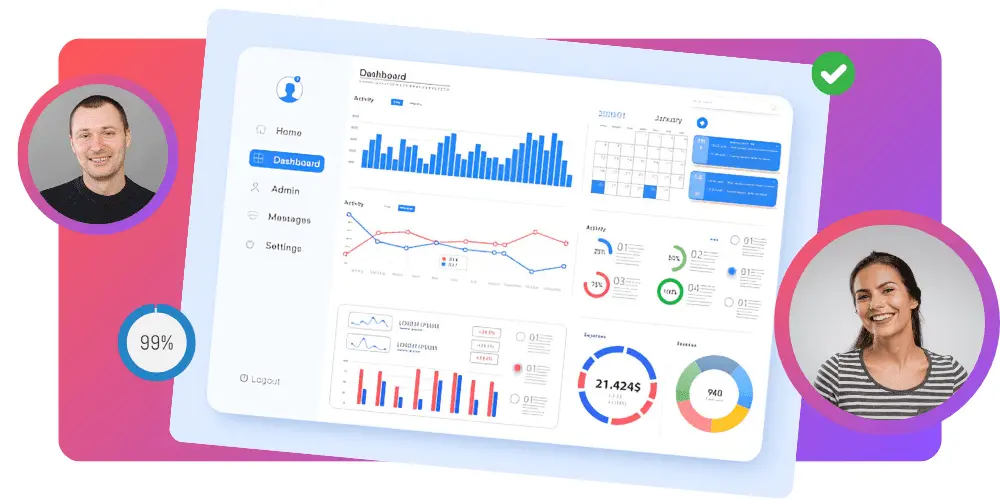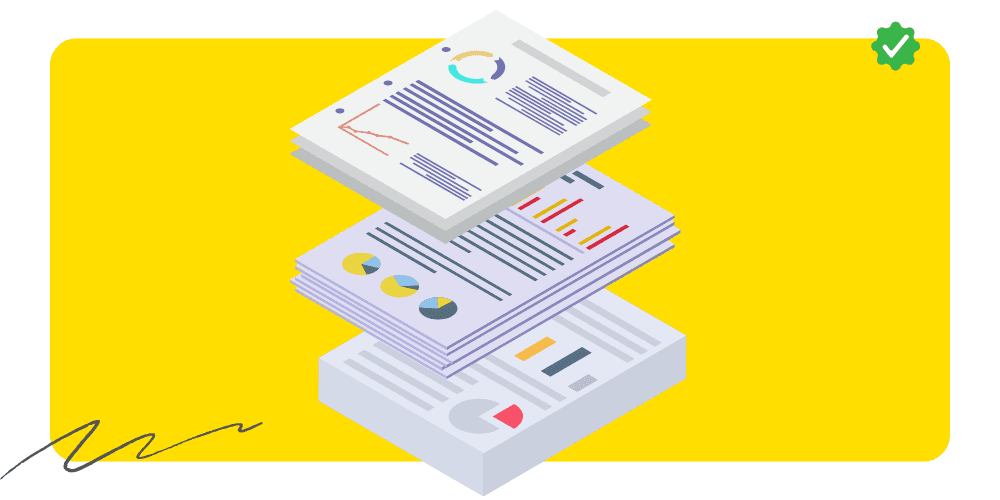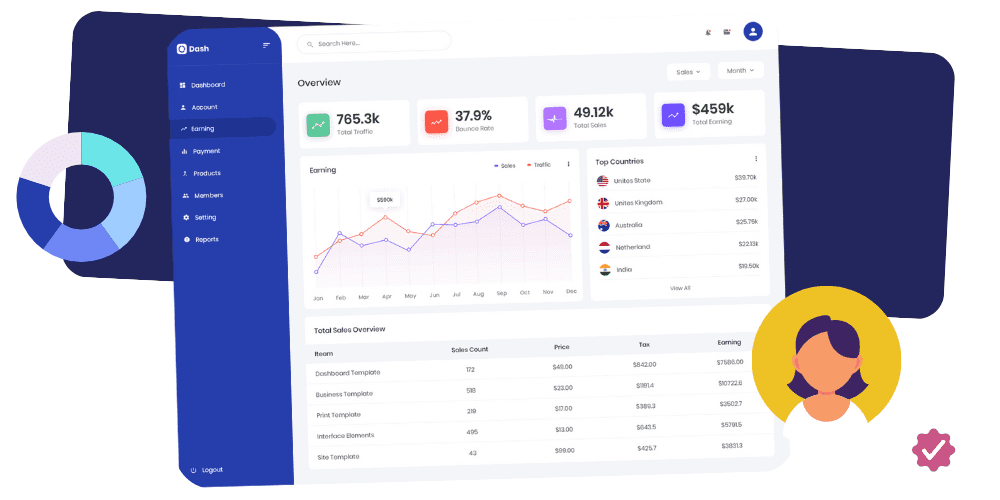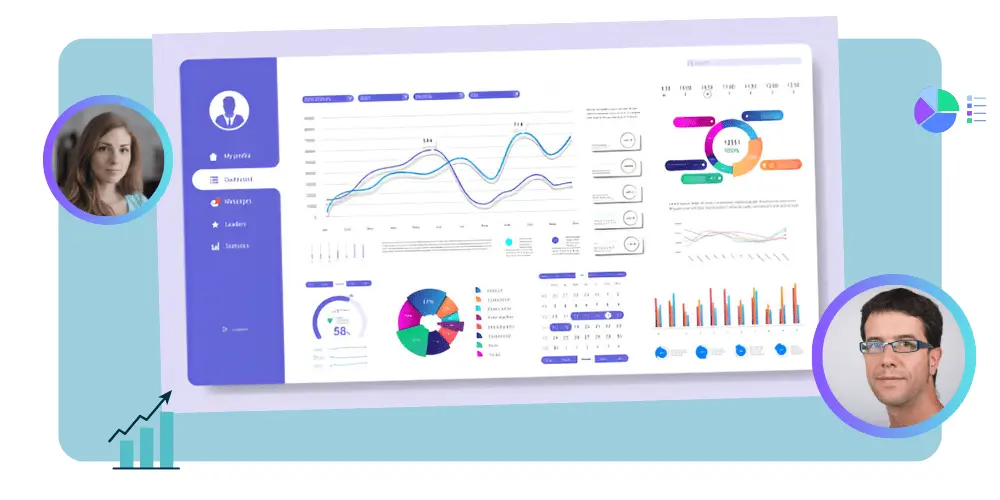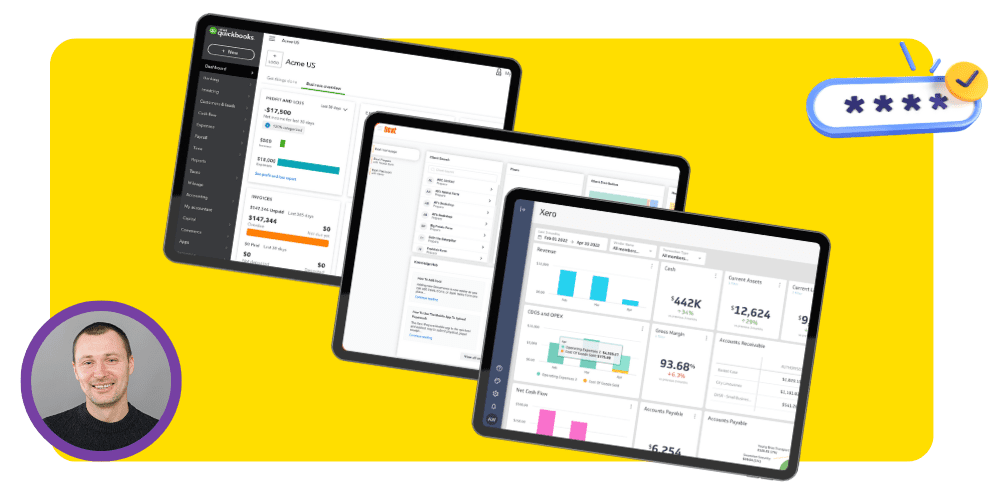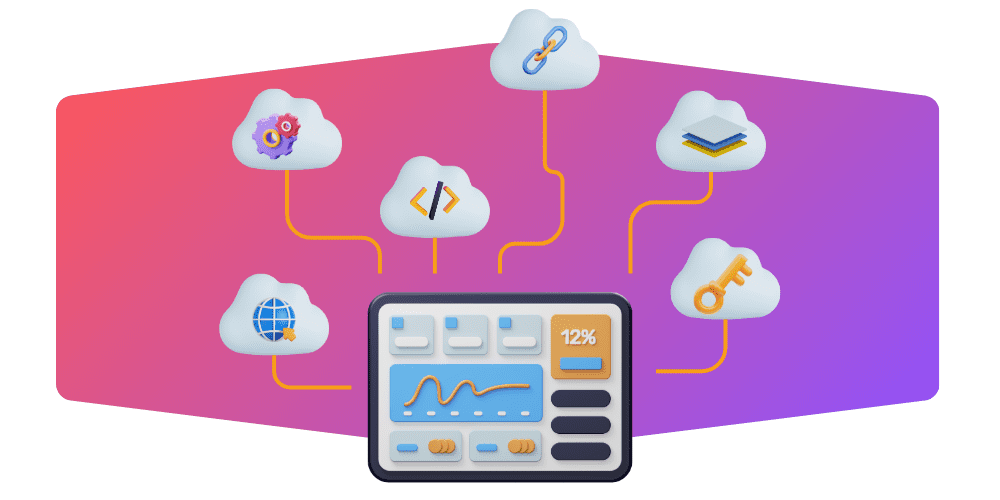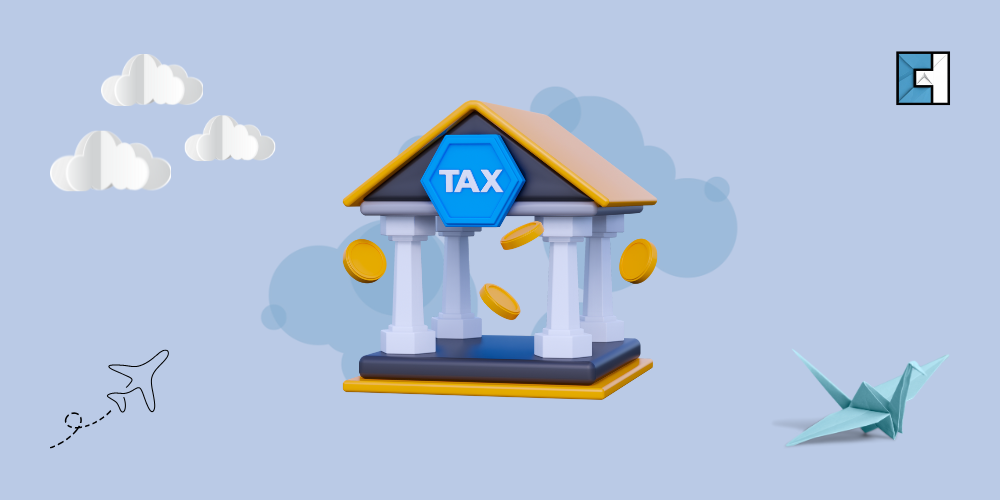In the ever-changing business world, the Accounting Break-Even Point is a true ode to the art and science of finance. This marks the pivotal moment when an undertaking transitions from mere survival to confidently sailing towards triumph. Think of it as walking a mystical tightrope between making money and losing money until the alchemy of income and outgoings strikes a perfect equilibrium.
For business owners and savvy investors, understanding the Break-Even Point is a must; doing so equips them with crucial information for making informed decisions and charting a road to success. It is a story of perseverance and fortitude in the face of adversity, of keeping the ship afloat by altering its sails as necessary.
Understanding the Break-Even Point is essential to achieve long-term success and make wise decisions. You can quickly grasp it with the proper context. Join us as we go into the depths of financial analysis to uncover the role of the Accounting Break-Even Point in determining the fate of enterprises large and small.
Understanding the Accounting Break-Even Point is crucial, much like valuing a business to make informed financial decisions and plan for success.
WHAT IS A BREAK-EVEN POINT
The accounting break-even point is when your company’s total expenditures equal its total sales. In this scenario, you are neither making a loss nor a profit. You’re getting the same amount of money back as you put into running your business. As a small firm, achieving break-even for the first time indicates that you are progressing in the right direction, as your total sales cover your costs without any surplus or deficit. Your income should exceed the break-even point if you’re doing everything else correctly. When your income falls below the break-even threshold, it implies that you are incurring losses. The break-even point is determined using a formula.
Why Do a Break-even Analysis
There are usually no consumers or clients to sell to in the early days, but there are startup expenses.
- Your break-even point is crucial in determining how long your business can continue operating before you begin to see a profit.
- Knowing your break-even point can help you set reasonable prices and generate enough money to pay your expenses.
- Before approaching investors for startup cash, a break-even analysis will help you successfully plan production levels and evaluate the profitability of your idea.
- It protects you against the tragedy of sinking all your funds into a venture that may not succeed.
- If you’re a business owner, manager, or entrepreneur, knowing your break-even point will help you make sound choices that will keep your company afloat until you start turning a profit.
- Once you’ve hit break-even as a firm, you can start thinking about growth rather than survival. The following stage, which is the most enjoyable, is to plan for increased revenues.
“Learn how How to create an effective business continuity plan? ties into break-even analysis for ensuring business stability.”
Understand the Basics of the Break-Even Point
The contribution margin ratio (sales per unit minus variable expenses per unit sold) measures profitability in a break even point formula. Break-even analysis is helpful for businesses because it allows them to evaluate the profitability of potential and existing products. The break even formula accounting estimates the sales volume (in units) needed to cover operating expenses before calculating profit.
The selling price per unit is the same as the sales per unit. The ratio of variable expenses to total costs is known as the variable cost ratio. Variable costs and expenditures include raw materials, manufacturing supplies, and sales commissions that rise and fall with output and income.
There is no correlation between sales volume and fixed expenses. Property taxes and general and administrative expenditures like office space rental are good examples of fixed costs.
HOW TO CALCULATE THE BREAK-EVEN POINT
When you know your fixed and variable expenses or have a calculated contribution margin, you can figure out when your organisation will break even. The break-even point (and contribution margin) for a product is set using a break-even analysis, which measures the sales volume at which the product breaks even. The contribution margin is the remaining profit margin after variable expenses are deducted from sales income.
The small business break even analysis method is as simple as adding up the sales and the fixed and variable costs.
A firm or its owner may determine its overall revenue, fixed expenses, and variable costs through financial analysis. The company may then use a break-even calculation to determine how much money it needs to bring in or how many products it has to sell to break even.
If you want to exclude non-cash expenditures like depreciation from your break-even analysis, use the cash break-even point formula instead. The same method for calculating the break-even point also applies to cash.
Using the break-even formula, there are two main methods for determining the break-even point. Both approaches need you to first to know your fixed costs, variable costs, and sales price. Fixed costs don’t change regardless of the number of sales, such as rent, insurance, taxes, and loan payments. Variable costs vary in relation to the number of sales achieved and encompass expenses like manufacturing, commissions, packaging, and labour. The selling price or sales per unit is the cost of offering products to your clients.
The Break-Even Point per Unit Formula
The break-even point per unit formula is used to calculate how much revenue a company needs to bring in from sales to cover the costs of producing that product. This equation takes into account the fixed and variable costs associated with making and selling a particular item.
| In units, use the formula: Break-Even Point (units) = Fixed Costs ÷ (Sales price per unit – Variable costs per unit). Alternatively, in sales GBP, use the formula: Break-Even Point (sales GBP) = Fixed Costs ÷ Contribution Margin. |
Fixed Costs
The number of items sold does not alter fixed expenses. Rent for retail locations or manufacturing facilities, as well as computers and software, are examples of fixed costs. Fixed expenditures include charges for graphic design, advertising and public relations services.
These are some common examples of fixed costs
Premises:
It refers to the overall monthly or annual cost incurred for a particular property, including mortgage payments, interest, rent, and other additional service fees.
Salary:
For permanent employees, regardless of sales. It is essential to exclude commissions linked to sales or production, but ‘on expenses’ such as national insurance contributions, pension payments, and benefits must be included.
Utility Services:
Fixed monthly mobile phone payments and fixed monthly costs for power, gas, telephone services, internet, water, and other utilities.
Insurance and Financing:
It includes insurance (both general and professional), principal, and loan interest. Include recurring expenses like monthly payments for leased business vehicles and long-term office equipment rentals like photocopiers.
Depreciation:
Capital expenditures include things like the cost of office computers and the cost of depreciating that cost over time (often three years).
Variable Costs
Variable costs change in proportion to the quantity produced, such as wages, utilities, and materials utilised in production.
Variable costs include things like:
Materials:
How much does buying the components that went into making your product cost? These might be relatively high, like the price of food and drink for a restaurant or café, or relatively low, like the price of paper and PowerPoint slides for a consulting firm.
Wages:
Payments to independent contractors and commission-based salaries tied to product sales are variable expenditures that might rise or fall monthly.
Merchandising:
Investing in customer acquisition. More significant marketing expenditures should result in more extensive sales, but you will need to determine the efficacy of your marketing to know for sure. How many new consumers do you get for every GBP you spend on advertising? You can mitigate or reverse these costs over time with more innovative marketing strategies.
Contribution Margin
The contribution margin is the difference between a product’s variable expenses and selling price. So, if you’re selling a product for £100 and the material and labour costs are £40, your contribution margin is £60. This £60 is then applied to fixed expenses. Any money remaining after that represents your net profit.
Contribution Margin Ratio
The term for a company’s total expenses divided by its contribution margin is called “fixed costs/contribution margin ratio.” This percentage is usually represented as a percentage. Fixed expenditures are subtracted from the contribution margin to arrive at this number. From there, you can determine how much you’ll need to make up for production expenses or price increases.
Profit Earned Following Your Break Even.
You’ve reached the break-even point when your sales figure equals your fixed and variable costs. The firm will show a net profit or loss of £0, and any additional purchases contribute to your net profit.
BREAK-EVEN POINT EXAMPLE FOR UK BUSINESSES
In the United Kingdom, businesses use a break-even analysis to calculate the minimum level of sales required to cover all costs. The calculation is relatively simple and a valuable tool for small businesses.
For example, let’s say you own a small business that sells widgets. Your fixed costs are £1,000 per month, and your variable costs are £0.50 per widget. If you sell each widget for £1, your monthly break-even point is 2,000 widgets.
This means you need to sell at least 2,000 widgets monthly to cover your costs. Your business will lose money if you don’t sell enough widgets to reach the break-even point.
To calculate your break-even point in pounds sterling, divide your fixed costs by your contribution margin ratio. In our example above, the contribution margin ratio would be 50%. This means that your break-even point is £2,000 (1,000 / 50%).
Once the break-even point is determined, you can devise strategies to boost sales and achieve profitability. For instance, options include price reductions, discounts, coupons, and cost-cutting initiatives for fixed and variable expenses.
Types of Break-even Analysis:
Here, we’ll look at three of the most frequent approaches to calculating break-even:
- Unit break-even analysis
- Sales break-even analysis
- Time break-even analysis
Unit Break-even Analysis:
A break-even analysis estimates the sales volume required to achieve profitability for a particular firm. In this breakdown, there are both fixed and variable expenses.
Formula:
Break-even units = fixed costs ÷ (selling price per unit – variable costs per unit)
Sales Break-even Analysis
You can calculate the break-even point in sales using a sales break-even analysis. This examination disregards unit counts in favour of GBP amounts to determine sales volume. It considers the unit selling price, the variable expenses, and the fixed costs.
Formula:
Break-even sales = fixed costs ÷ (1 – variable costs ratio)
Time Break-even Analysis
The break-even point is when a business makes money again after deducting all startup costs.
The fixed expenses, variable costs, and projected sales income for a certain period are all considered.
You can calculate the time it takes for a firm to get a return on its original investment by looking at the net cash flow monthly or annually. When determining the success of a new business or a project with high initial expenses, time break-even analysis is an invaluable tool.
Formula:
Break-even time = fixed costs ÷ (sales – variable costs per unit) per unit of time.
Speak to your startup accountant if you are not clear about the calculations.
Understanding how cash flow impacts recovery timelines is key to mastering Time Break-even Analysis.
WHEN SHOULD YOU CONDUCT A BREAK-EVEN ANALYSIS
For companies, conducting a break-even point evaluation holds significant importance as it aids in assessing the viability of an upcoming product decision. This may assist you in avoiding future mistakes and saving money in the long run. It can also assist you.
Consider a scenario in which you go ahead with an idea without conducting a break-even calculation and find out that it wasn’t successful despite your expenditure of money, time, and effort. Break-even point analysis prevents you from running into issues like this from the start. It can even assist you in developing a pricing strategy that will allow you to profit from your items.
For established businesses, conducting a break-even point analysis can prove beneficial while implementing changes in specific operational aspects. Such adjustments may involve altering the distribution model or addressing other expense-related factors.
A break-even point analysis aids in the creation of better judgments in all of these situations. A break-even point evaluation is very useful when considering creating a new product. This is especially true for costly items. If you do a break-even point analysis, you’ll know if the objective is feasible and whether producing the item is wise.
Strategies like option to tax and smart pricing can help optimise profitability and reach break-even faster.
WHAT ARE THE ADVANTAGES OF BREAK-EVEN ANALYSIS?
The following are some of the advantages and benefits of break-even point analysis.
Lowers Risk
The break-even approach minimises the risk of implementing ideas that aren’t as good as initially assumed. While you might have a ground-breaking concept, it may not be the ideal option in current circumstances. You might take months, even years, to see any results and earn money. Break-even analysis can assist you in lowering your chances of pursuing such a plan since it shows you realistic prospects of success. Based on this data, you may determine whether you wish to continue working on your concept.
Aids in Setting Price
The break-even point formula for break-even analysis makes pricing your goods much easier. Product pricing is critical since you need to strike a balance so that your clients are pleased with their purchases and you may profit from selling them. The Break-even analysis is a tool to help you determine the best-selling price for your products. It shows you the most advantageous price that will benefit you and the vendor while allowing you to profit.
Helps with Funding
The break-even calculation can also assist with financing. Business owners rely on break-even analysis as part of their business plan because it is essential. A break-even study might help you obtain the required funding if you’re a new company. This technique can be utilised by organisations that have been operational for at least a few years. Break-even point analysis helps you assess whether or not you’ll need to take on debt in the future and prepares you for it.
Aids in Setting Targets
The break-even point formula indicates how much you should sell to balance your costs and income. This can be useful for your sales staff since it provides realistic goals. If there is a fundamental goal, your team will know exactly what they need to accomplish rather than just working aimlessly. The time range during which the objectives must be met and how many products must be sold is shown in the break-even analysis. This makes it simpler to achieve goals and reduces uncertainty.
WHAT ARE THE LIMITATIONS OF THE BREAK-EVEN POINT ANALYSIS?
The break-even point analysis is helpful, but it isn’t perfect. Here are some of its drawbacks.
Simplicity
The break-even analysis is feasible for businesses with a single price point. However, if numerous pricing options and items exist, there may be better choices than this method. In such cases, conducting the break-even calculation regularly becomes necessary to account for fluctuating or changing costs.
Based on Data
The accuracy of the data used in the break-even point formula determines whether you can trust the results. This implies that only trustworthy data is required. Because of ever-changing expenditures, this isn’t always true.
Doesn’t Account for Demand Changes
The break-even chart does not consider demand, which is a factor that varies. The demand for your items is influenced by several elements, making it crucial to think about. On the other hand, break-even analysis does not take this into account, implying that it isn’t entirely precise.
Don’t Factor in Competition
When you utilise the break-even point formula for break-even analysis, you are ignoring the competition. Competitors may have an impact on demand for your goods. For example, if a new competitor releases its items, it might affect your break-even point. As a result, it isn’t completely dependable.
Factors Influencing The Break Even Point in Business
Financial experts estimate your company’s break-even point, but management may adjust it via growth and cost-cutting tactics. External variables, such as inflation leading to higher product costs, a weakening economy, and stiffer competition, may also affect the accounting break even formula point. The external influences are more difficult to manage.
Variation in Sales – Whether Up or Down
Altering prices and the number of units sold may positively or negatively affect sales. As the number of units sold rises with increased sales volume, the variable cost per unit falls, and the contribution margin ratio rises.
When the unit selling price increases, the contribution margin increases proportionally. Each product’s proportion of fixed expenses might shift as sales volume fluctuates.
Expenditure and Cost Cuts
Reduce the break-even threshold by decreasing manufacturing costs and other company expenditures to boost performance or deal with high fixed costs.
By enhancing quality, manufacturing companies may decrease production costs by reducing the amount of wasted materials and reworked products. A company may save money on variable product prices by integrating its enterprise resource planning (ERP) system with intelligent shop floor hardware and software like IoT sensors, artificial intelligence monitoring, and early issue alarm messages.
Acquiring Brand-New Tools
Investing in new machinery for production allows manufacturers to switch from paying workers an hourly wage to a set rate. The moment at which profits begin to drop might shift as a consequence. The new machinery will pay for itself as output volumes rise.
Altering the Number of Product Lines Offered
Since break-even analysis frequently calculates by product line, adding new items or removing underperforming product lines can affect your company’s break-even point. When there is a change in the products offered, adjusting the fixed overhead applied to each product is necessary. New items will incur more variable expenses, whereas discontinued ones will incur less.
Why do eCommerce firms need a break-even analysis
It Facilitates Goal-Setting
Since you’re working with quantities of individual units, you can easily calculate how many monthly sales are required to cover fixed expenses and how much money you’ll make from each unit sold. With these numbers, you may adjust your sales strategies and set reasonable prices for your items.
Then, you’ll have a good idea of what you need to sell to break even and how much you can spend on customer acquisition without jeopardising your ability to make a profit. You should be talking to your e-commerce accountants about this in all your strategies.
Smarter Future Planning
You may find out whether a new sales channel will be lucrative by doing a break-even study. You’ll know whether it’s worth your time and money to attend sales events or run a temporary pop-up location, and you’ll have peace of mind while switching from Amazon to your centralised website.
It also decreases the risk for potential business. You may save time and money by doing a break-even analysis before releasing a new product or exploring a unique business opportunity to see whether it will be lucrative.
Plus, from a development standpoint, it gives you something concrete to utilise when raising capital or winning over investors. Establishing your company’s break-even point shows that you’ve thought through your cash flow and are preparing for the future.
Frequently Asked Question
What Does Accounting’s Break-Even Point Mean?
The sales volume at which total revenue and expenses are equal and no profit or loss is known as the break-even point. To ensure their financial security, firms must reach this crucial milestone.
The Break-Even Point Is Determined in What Way?
There are two ways to calculate the break-even point:
a) Break-Even Point per Unit: Subtract fixed costs from the sum of variable expenses and sales prices per unit.
b) Sales GBP Break-Even Point: Subtract fixed costs from the contribution margin.
Why Is the Analysis of the Break-Even Point Significant for My Business?
The analysis of break-even points assists in determining the minimal sales required to pay costs and informing choices regarding pricing, production, and sales tactics. It is necessary for profitable and sustained growth.
Can I Compare Different Goods or Services Using the Break-Even Point?
Yes, specific products or services can use the Break-Even Point analysis. You can compare Break-Even Points to determine whether offers are more profitable and to make tactical business decisions.
How Can Clear House Accountants Assist With the Examination of Break-Even Points?
We at Clear House Accountants are experts in financial forecasting and analysis. Our experts can help you determine your Break-Even Point, understand the data, and develop plans to improve the productivity and profitability of your company.
CONCLUSION
Breaking even point analysis, while valuable, becomes even more meaningful when complemented by other measures. More than just relying on a single financial measure is required to gain a complete understanding. This holds for break-even point analysis as well. While the tool is beneficial, it should not be the sole basis for evaluating your company’s performance. To gain more comprehensive insights, consider outsourcing your accounting to expert accountants or utilising business software solutions that offer detailed data reports.
Additional Resources




